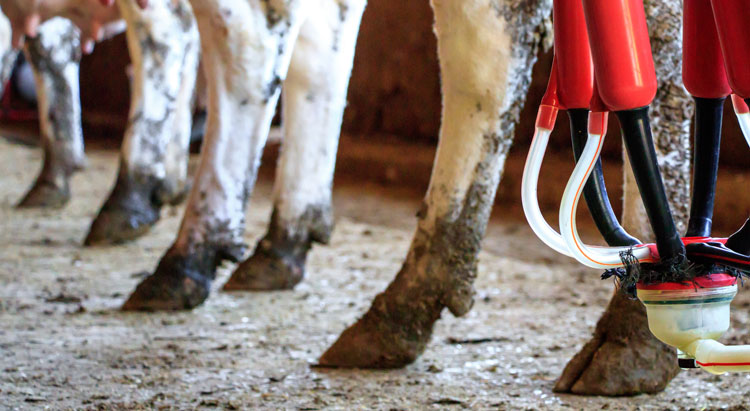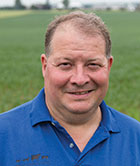The author is a partner in the Maria Stein Animal Clinic, Maria Stein, Ohio.

My social media news feeds are about 20% updates from family and friends, 20% communication with other veterinarians about cases and practice, 40% a waste of time with someone trying to sell me something or convince me to accept their concept, and 20% words of encouragement or exposure to unknown facts or bits of history. From the last category came a post that I pondered for days.

How often do we have a plane to catch, so to speak, that we miss the opportunity to help those in our care?
Make it easy
Lameness has the potential to be that suffering we pass over in dairy cattle because it doesn’t seem urgent and, on many farms, fixing it is inconvenient. If we make fixing lameness convenient, we are more likely to seize the opportunity to help a cow have less pain, be more productive, and have a longer life. Karl Burgi of Save Cows Network breaks down maintaining healthy hooves into three themes:
- Find lameness early.
- Treat problems with consistency.
- Take steps to create a hoof friendly environment.
Locomotion scoring is a useful tool for getting a true picture of the lameness level on your farm, but I see few farms do this routinely. Certainly the cows that score 3 and 4 need immediate attention, but if those cows are still getting to the parlor, they may not be identified as needing help. Perhaps the herdsman’s schedule is too full to have them watch a shift return from the parlor each week. I suggest we empower cow pushers to record the number of cows that need corrective action.
I write “LM” on the backs of cows that I observe with locomotion issues during herd check. The cows can then be sorted for a herdsman or hoof technician to work on their feet. The last cows into the parlor would be good candidates to watch for lameness, and your fetch list for a robotic milking system is a good place to start. The more lameness in the herd, the more cows there are to fetch.
Most farms have a regular schedule of hoof trimmer visits. The acutely lame cows really shouldn’t wait for the trimmer if we can have someone available on a daily basis to give them the attention they need. For years, I was that person. Every farm should have facilities and training to address the acutely lame cows. The cow might just need a wrap on a hairy wart or an abscess pared out. Make sure those wraps come off in 24 hours, though.
Steps to cut lameness
Maintenance trims are part of prevention as they catch problems before they become chronic and correct hoof angles so that the heels are not down in the manure and the toes are balanced. Maintenance trims around 120 days in milk and at dry-off is adequate in most herds. Some herds have observed that when they trim three times a year, they have almost no clinical lameness.
The ability of the trimmer is important as someone who is untrained can do more harm than good. Most of the trimmers in our area have been through excellent training, so I am not called on as much to fill the lameness need.
Recording lesions can help identify causes and preventions. Creating a hoof friendly environment is also important. Cows with manure coated hooves have more lameness issues. Most alley scraper barns, some three row barns that are only scraped twice a day, and some flush systems are challenged by this.
Also, how much time do we force cows to be on their feet? We see more lameness when cows are out of their pen more than three hours per day in mattress barns or four hours in sand barns. Excessive lockup times can challenge foot health. Wearable technologies can reduce the time spent making more sick cows while we are looking for sick cows in the fresh cow pen.
Are the stalls designed with comfort in mind? Stalls are expensive, but so are cows, and standing cows have a greater risk for trauma.
Slippery, rough, and slatted floors can lead to hoof trauma. The ideal floor has narrow, shallow grooves 3 inches apart.
Sand is critical in maintaining healthy hooves. Many mattresses are sold, being advertised to be as good as sand. They may be in some measures but not all.
Cooling cows also helps them lie down. It only takes 15 minutes in a holding pen that is not well cooled to raise a cow’s internal body temperature by one to two degrees. It takes eight to 12 hours in a well-cooled barn to remove that heat. Then we do it again at the next milking.
Cows that have their internal body temperature raise by 1 to 1 1/2 degrees will stand up. They may cool down when standing and then lie down again, but on a hot day, they can lose three hours of lying time. That costs milk now and longevity later.
Footbaths are our best tool for preventing heel warts. They need to be changed frequently and be long enough that every foot gets dunked three times. Cow flow through them is greatly enhanced with high solid sides, and we have some farms that have doubles side by side, so one cow doesn’t stop the whole show.
Lastly, there are places like travel alleys and holding pens where rubber on the floor can help reduce foot wear.
A lot can be lost
You leave major dollars on the table if you “have a plane to catch” rather than staying on top of lameness in your herd. Create a system to identify and address lameness, and look at your facility and operations from an hours of lying time perspective. You may have a veterinarian who is interested in comfort and lameness that can give you some observations.
A few years ago, we had a farm that moved cows into a new barn with many comfort features. The cows had activity monitors, and the dairyman called saying the cows are lying down 14 hours a day. “Is that too much?” he asked.
There were no vultures in the picture I took of that farm. Are there in yours?








